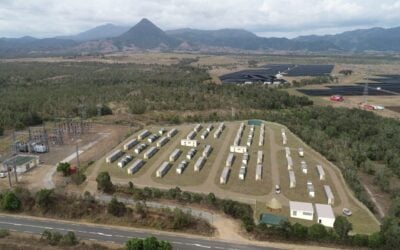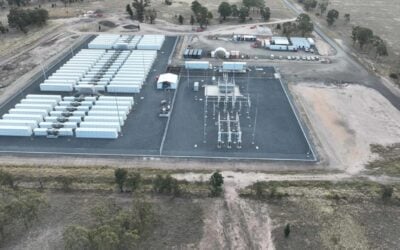Image: RES.
Listed funds in the UK which own a significant portion of the country’s utility-scale solar PV assets are not currently convinced by battery storage’s feasibility, but remain primed to deploy the technology at scale when the time is right.
Four of the UK’s largest listed funds with solar interests spoke at last week’s Solar Finance & Investment Europe conference in London to provide an update on their activities and while interest in the booming secondary solar market took centre stage, attention quickly turned to the future and the potential role for battery storage within their operations.
Retrofitting utility-scale storage applications on the UK’s solar assets – which now top 12GW in capacity – has long been considered as an ideal way to both ease grid frequency fluctuations and help smooth generation peaks caused by solar’s intermittent load profile.
Owners of generation assets could theoretically shift their load profile to peak demand times for more significant profits, while frequency response tenders such as EFR and FFR, as well as various capacity market auctions, offer the potential for projects to ‘stack’ revenues to make them more viable financially.
Try Premium for just $1
- Full premium access for the first month at only $1
- Converts to an annual rate after 30 days unless cancelled
- Cancel anytime during the trial period
Premium Benefits
- Expert industry analysis and interviews
- Digital access to PV Tech Power journal
- Exclusive event discounts
Or get the full Premium subscription right away
Or continue reading this article for free
There is also considerable interest from the market, and recent research compiled by Solar Media’ in-house research team found that the country’s battery storage pipeline stands at circa 2.3GW, with a large portion of these installations being lined-up to be retrofitted onto existing generation assets.
But those present at the event took a dim view of the storage market’s current prospects and insisted that the technology was not currently right for listed funds to adopt.
Matt Black, investment director at Foresight, said it would be some time before listed funds adopted storage en masse and his view was echoed by James Armstrong, founding partner at Bluefield, who said: “We’ve got the generation capacity. We don’t have to take the risk [of deploying storage].”
Michael Bonte-Friedheim, chief executive of NextEnergy Capital, remarked that investors are currently not satisfied with the technological risks associated with storage against what is still regarded as an uncertain set of returns, and even went as far as to suggest that early investors in battery storage stood to lose money.
Longer-term contracts desired
While the T-4 capacity market auction offered contracts for battery storage assets lasting 15-years, other tenders have been limited in length to one or four years. While the support mechanisms are valued, it’s considered that until longer-term incentives are offered investors will remain sceptical of the technology’s financial viability as long as prices remain high.
“The only way storage will work for us is if we can use existing grid connections and stack revenues…load shifting is not worthwhile,” Bonte-Friedheim said.
But while their immediate potential was questioned, all listed funds present insisted that battery storage would remain on their radar and that they would be primed to roll it out to their sites whenever the investment made sense.
Both Armstrong and Bonte-Friedheim said they considered battery storage to be a “free hit”, meaning that they would not miss out by refraining from being an early adopter and would still be able to reap the benefits as soon as the cost reductions made investments economical.
Armstrong said discussions surrounding battery storage were likely to be held at the start of every year. “When it becomes viable, then we’ll move,” he said. Bonte-Friedheim implied the same would happen at NextEnergy Capital, adding that his firm could install battery storage at all of its operational solar farms in a relatively short space of time as soon as it was viable.
Solar Media is once again hosting the UK Energy Storage Summit, from 28 February to 1 March in London, featuring a range of speakers from government, regulatory and industry circles. See here for more details.





